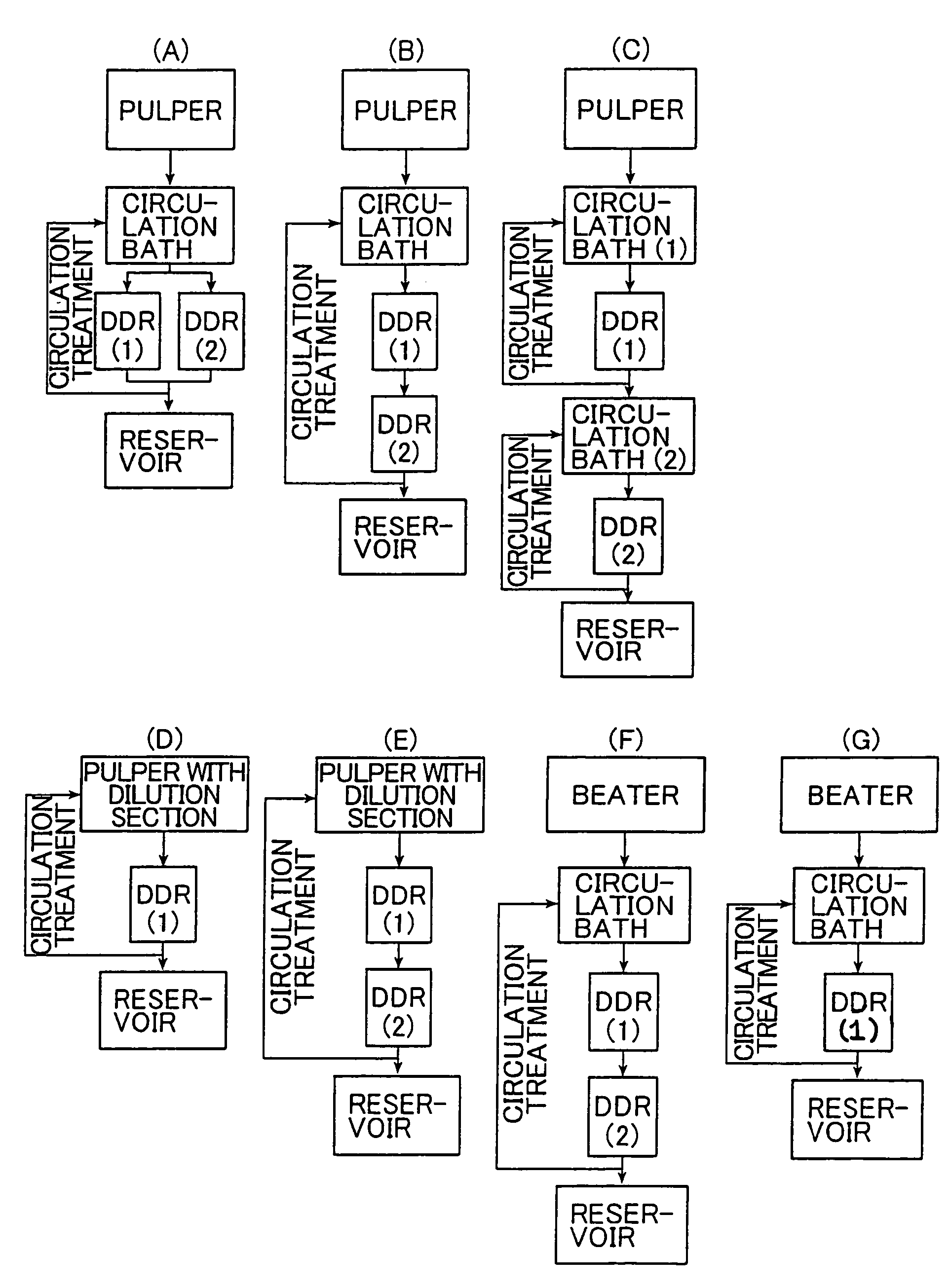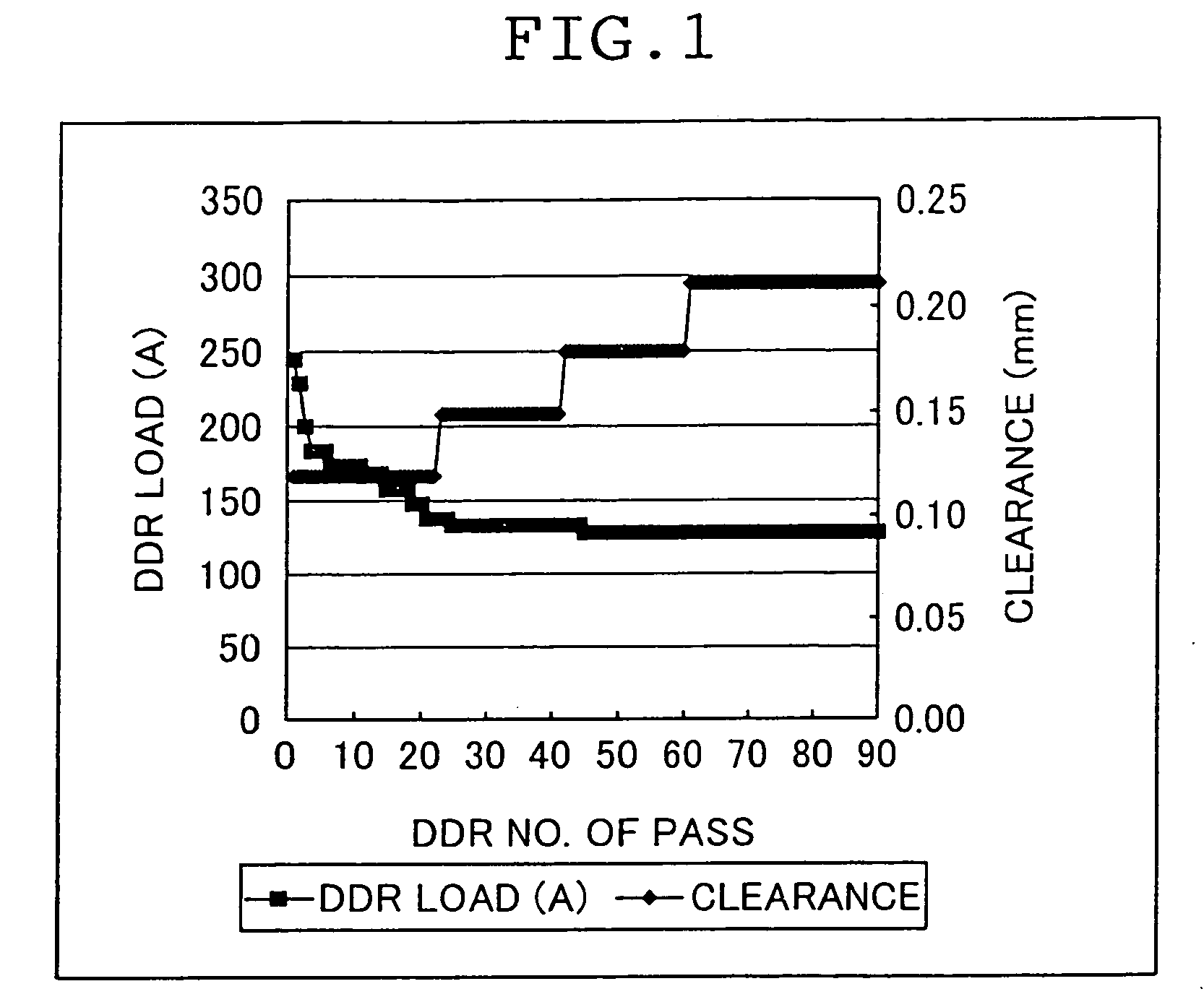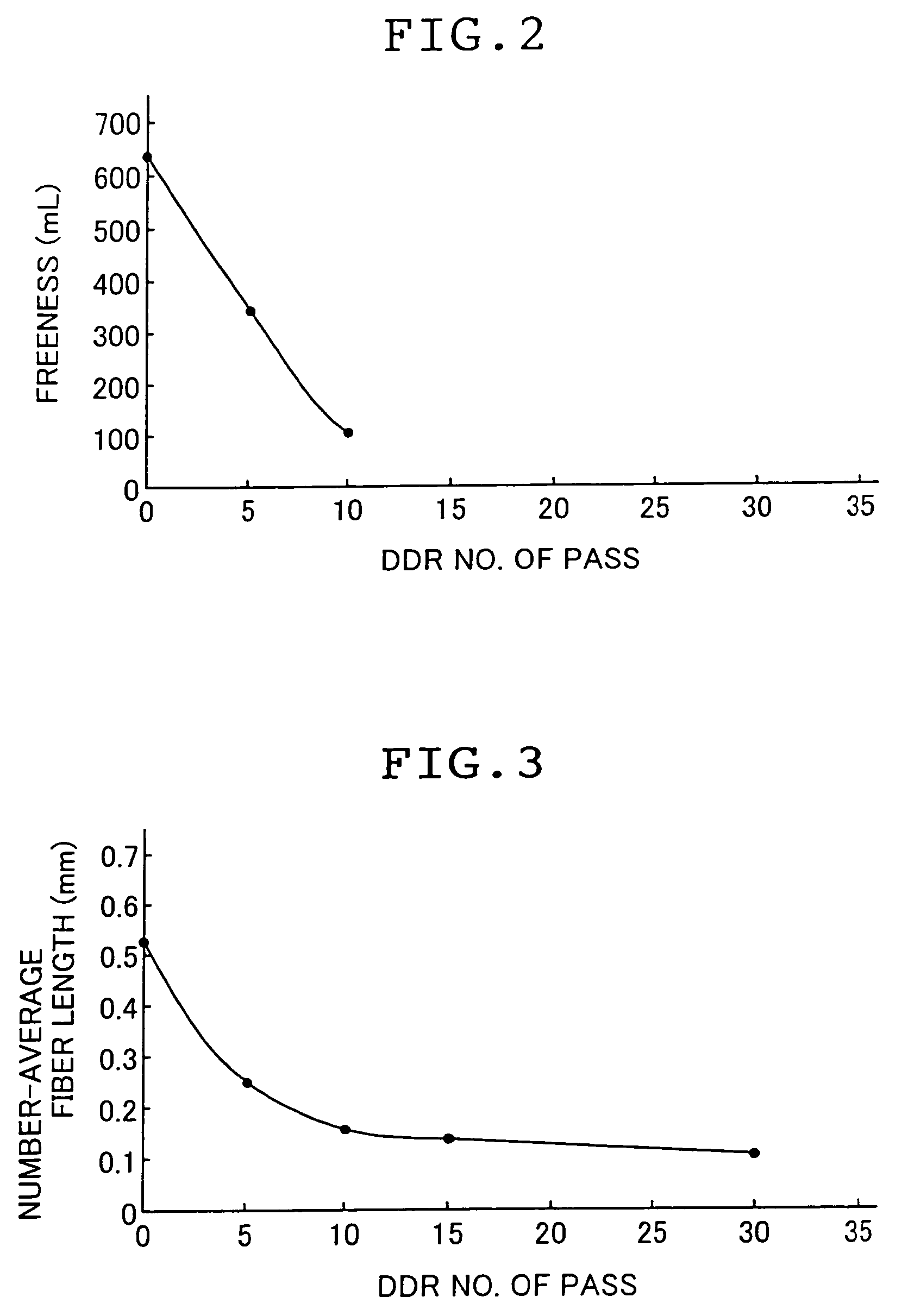Method and apparatus for manufacturing microfibrillated cellulose fiber
a technology of microfibrillation and cellulose fibers, which is applied in the field of methods and apparatuses for manufacturing microfibrillation cellulose fibers, can solve the problems of high energy consumption, inconsistent properties of the resulting final product, and special design equipment and high energy consumption, and achieve the effect of stable and efficient production of such fibers
- Summary
- Abstract
- Description
- Claims
- Application Information
AI Technical Summary
Benefits of technology
Problems solved by technology
Method used
Image
Examples
example 1
1. Manufacturing of Microfibrillated Cellulose Fibers
[0126]By using the manufacturing apparatus of the present invention comprising a pulper, a circulation bath and two DDR's provided in series as shown in FIG. 8(B), microfibrillated cellulose fibers were manufactured.
(1) Defibration Step
[0127]A pulper of 6 m3 capacity (manufactured by Aikawa Tekkou Co., Ltd.) was filled with water of 5.5 m3 and as the water was made to circulate, LBKP sheet (manufactured by Domtar Inc., U.S. under the trademark “St. Croix”) of 400 kg (absolute dry weight being 354 kg) whose water content is 11.5 wt % was put into the pulper.
[0128]Then, 0.1 m3 of water was added to adjust the concentration of slurry to 5.9 wt % and then defibration was performed. At that time, the temperature of the slurry was 18° C.
[0129]After the defibration was continued for 15 minutes, the slurry was transferred to the circulation bath. The transfer of the liquid was performed as water was being added to the pulper.
(2) Step of T...
example 2
1. Manufacturing of Microfibrillated Cellulose Fibers
[0158]Microfibrillated cellulose fibers were manufactured using the manufacturing apparatus of the present invention comprising a pulper provided with a dilution section, one DDR and a reservoir bath, as shown in FIG. 8(D).
(1) Defibration Step
[0159]A pulper (manufactured by Aikawa Tekkou Co., Ltd.) of a 9 m3 total capacity whose number of agitating rotations can be inverter controlled having a pulper section of a 6 m3 capacity and a dilution section of a 3 m3 capacity was filled with water of 5.6 m3, and as the water was circulated, 409 kg (absolute dry weight being 354 kg) of lavatory paper stock (manufactured by Oji Paper Mfg. Co., Ltd.), which was a pulp beaten and fibrillated having a water content of 13.4 wt %, was put into the pulper and defibrated therein. The agitation in the defibrating operation was at the maximum number of revolution. The concentration of the slurry was 5.9 wt % and the temperature was 18° C.
[0160]After...
example 3
1. Manufacturing of Microfibrillated Cellulose Fibers
[0173]Microfibrillated cellulose fibers were manufactured with the manufacturing apparatus of the present invention comprising a pulper provided with a dilution section, two DDR's arranged in series and a reservoir bath, as shown in FIG. 8(E).
(1) Defibration Step
[0174]A pulper (manufactured by Aikawa Tekkou Co., Ltd.) of an 8 m3total capacity whose number of agitating rotations can be inverter controlled having a pulper section of a 6 m3 capacity and a dilution section of a 2 m3 capacity was filled with water of 2.77 m3, and as the water was circulated, 200 kg (absolute dry weight being 177 kg) of LBKP sheet (manufactured by Domtar, Inc., U.S., under the trademark “St. Croix”), whose water content is 11.5 wt %, was put into the pulper and defibrated therein at the slurry concentration of 6.0 wt %. The temperature of the slurry at this time was 20° C.
[0175]After the defibrating operation was performed for 15 minutes, water was adde...
PUM
| Property | Measurement | Unit |
|---|---|---|
| length | aaaaa | aaaaa |
| length | aaaaa | aaaaa |
| width | aaaaa | aaaaa |
Abstract
Description
Claims
Application Information
 Login to View More
Login to View More - R&D
- Intellectual Property
- Life Sciences
- Materials
- Tech Scout
- Unparalleled Data Quality
- Higher Quality Content
- 60% Fewer Hallucinations
Browse by: Latest US Patents, China's latest patents, Technical Efficacy Thesaurus, Application Domain, Technology Topic, Popular Technical Reports.
© 2025 PatSnap. All rights reserved.Legal|Privacy policy|Modern Slavery Act Transparency Statement|Sitemap|About US| Contact US: help@patsnap.com



